Black Glod Glaze: When Darkness Reflects Light

Among the various glazes in the world of Jian Zhan ceramics, the Wujin glaze—literally “Black Gold”—stands out for its rich depth and mysterious luster. Often referred to as Gàn hēi yòu (绀黑釉) or simply black glaze, this finish was praised by Cai Xiang in his Tea Record (茶录), where he noted, “Those made in Jian’an are dark blue-black, with streaks resembling hare’s fur.”

Unlike the more overtly decorative glazes such as hare’s fur or oil spot, Wujin glaze is subtle and introspective. Most bowls with this finish appear jet black, like polished lacquer, but upon closer inspection, many reveal a hidden complexity—shades of blue-black, deep brown, or even a brassy yellow. These color variations occur due to trace amounts of oxygen entering the kiln during firing, especially in traditional dragon kilns, which were not completely sealed. This phenomenon has since become a valuable tool in authenticating antique pieces.
What Makes a Wujin Glaze So Captivating?
A well-fired Wujin bowl is characterized by a thick glaze layer with a smooth, mirror-like surface. The glaze appears as if it could reflect the soul of the drinker—hence the name “black gold.” These pieces often glow with a reddish hue under light and may exhibit faint crystallized streaks, similar to hare’s fur or oil spot, formed by wood ash impurities.
Microscopic analysis reveals that these textures come from iron oxide crystallization and feldspar formation, visible under polarized light. On some pieces, the rim shows a yellow ring or halo—an indicator that the glaze floated during firing or that the firing atmosphere was not fully reductive.
A Product of Tea Culture and Kiln Innovation
During the Song, Jin, and Yuan Dynasties, black-glazed tea bowls were widely produced across kilns in Fujian, Jiangxi, Shandong, Henan, and Hebei provinces. Their popularity was closely tied to the cultural ritual of tea contests (斗茶)—a practice that favored dark-glazed bowls for highlighting the frothy white “tea flowers” that formed during whisking.
Among all regional styles, Jian ware from present-day Jianyang, Fujian, remained the most celebrated. These kilns produced not only Wujin-glazed wares, but also legendary finishes like hare’s fur, oil spot, and the elusive yaobian (transmutation glaze). Literary figures such as Huang Tingjian and Mei Yaochen praised these bowls in verse:
“纤纤捧,冰瓷莹玉,金缕鹧鸪斑。”
—Huang Tingjian, Manting Fang
“兔毛紫盏自相称,清泉不必求虾蟆。”
—Mei Yaochen
These poetic lines remind us that the appreciation of Jianzhan bowls transcended function—they were vessels of aesthetic delight and intellectual contemplation.
The Unique Appeal of Southern Song Wujin Bowls
Southern Song Wujin bowls in particular display a distinctive deep blue-black (绀黑) glaze. The surface is rich and full-bodied, with subtle ruby or sapphire reflections when held under strong light. Most of these pieces also exhibit microscopic crystalline specks—remnants of the wood ash and iron content that gave rise to their shimmering finish.
These trace elements are not flaws but rather natural signatures of the kiln and clay. They provide a historical fingerprint, connecting each bowl to the craftsmanship of ancient artisans and the organic chaos of high-temperature firing.

Final Thoughts
Wujin-glazed Jian Zhan bowls may appear modest at first glance, but their visual restraint is what makes them timeless. Each piece captures a quiet interplay between darkness and light, simplicity and depth. For collectors, tea masters, and ceramic lovers alike, a genuine Wujin bowl is not just a tea vessel—it’s a meditation in form, glaze, and fire.
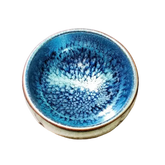


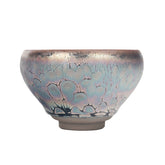
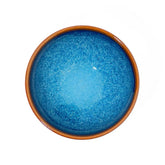
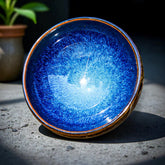
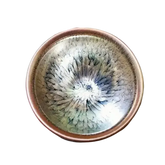
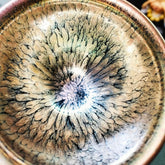


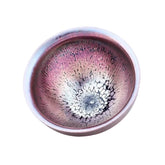


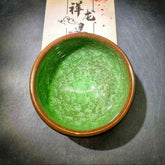
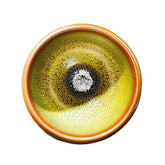
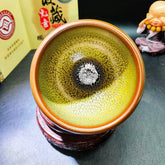
Leave a comment
Please note, comments need to be approved before they are published.